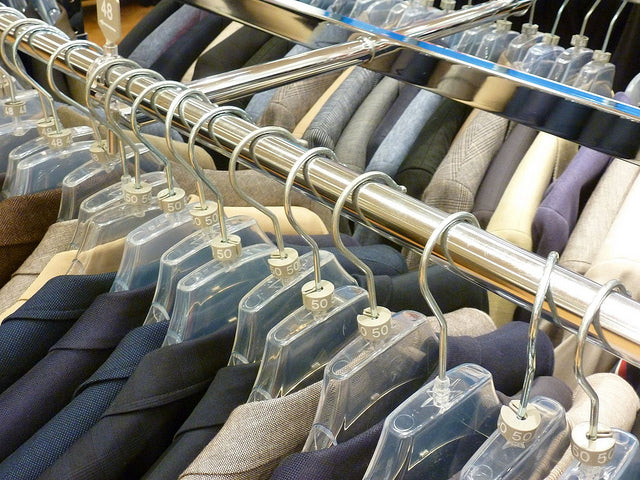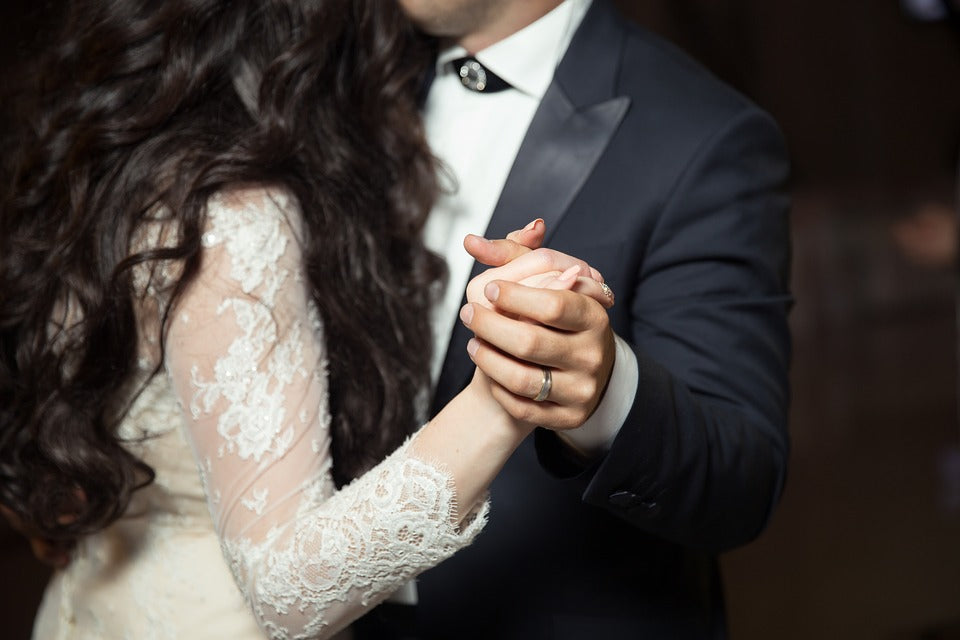Leave the Bottom Button Unfastened for Single-Breasted Coats
For two and three-button single-breasted suit coats, it's best to leave the bottom button unfastened. In addition to providing a clean, sophisticated look, it also helps with mobility and range of motion when seated. You can still try to fasten all of the buttons on a single-breasted coat, but you won't be able to move around freely when seated. By leaving the bottom-most button unfastened, you'll have greater range of motion while creating an attractive, uniform appearance -- and that's exactly what you should strive for when wearing a suit.Leave All Buttons Unfastened for Double-Breasted Coats
While it's generally best to only leave the button unfastened for single-breasted suit coats, you should leave all the buttons undone for double-breasted coats. Doing so will eliminate the otherwise tedious process of having to constantly redo your inner buttons when standing up from a seated position. For some men, this isn't a problem. But most will agree that constantly adjusting the inner buttons of your suit coat can be a nuisance. This problem is easily avoided, however, by leaving all of your buttons unfastened when wearing a double-breasted suit coat.Match Width of Necktie to Width of Lapels
When choosing a necktie to wear with your suit, consider its width and how it relates to your lapels. Generally speaking, the width of your necktie should be roughly the same as the width of your lapels. If your necktie is wider than your lapels, it will look oversized and awkward. On the other hand, if it's more narrow, it will look small and equally as awkward. Take a moment to look in the mirror to see how the width of your necktie aligns with the width of your lapels. You want to maintain a similar width throughout these two areas to achieve a clean and proper look.Match Socks with Trousers
Many guys (myself included) are guilty of overlooking the importance of wearing the right dress socks with their suit. They assume socks are insignificant, simply because they are largely unseen and hidden by the trousers. While this isn't necessarily false, it's not entirely accurate either. Upon sitting down, the bottom of your trousers may rise just enough to reveal the top of your socks. Failure to wear the right color and type of socks could have a negative impact on your appearance. So, try to stick with a pair of light/thin dress socks that matches the color of your trousers. If you are wearing traditional black trousers, for instance, you should wear black dress socks. Or if you are wearing charcoal-gray trousers, you should wear a similar pair of charcoal-gray socks. Doing so will allow your socks to blend together with your trousers, keeping them somewhat concealed when seated and standing.
Thin Lapels Offer a Modern Appearance
If you're trying to achieve a more modern appearance, choose a suit with thin lapels. Thin lapels are commonly associated with a newer and more look, whereas wide lapels offer a traditional, classic look. There's really no single "best" style from which to choose, as some men prefer suits with thin lapels and others prefer suits with wide lapels. I recommend trying both styles of suits to see which one works best for your particular needs.Necktie Should be Darker than Your Shirt
Don't underestimate the importance of choosing the right necktie for your suit. The necktie is essentially the finishing touch on a man's suit, bringing all of the colors and visual elements together to create a uniform appearance. But with so many different colors and styles available, how do you know which necktie to choose? Many fashion experts recommend choosing a necktie that's darker than the color of your shirt. Doing so will draw attention to the center of your suit, allowing your necktie to contrast to the color of your shirt.Unstitch the Coat Pockets
When you first acquire a new suit coat, check the pockets to see if they are stitched together. Most suit coats are produced in this manner, preserving their shape and integrity until sold. However, you'll want to unstitch your pockets before wearing the coat, as this will allow you to fully use the coat to its potential.Avoid Off-The-Rack Suits
What's wrong with purchasing off-the-rack suits? Well, they aren't always a poor choice, but opting for a custom-made suit will almost certainly prove well worth the additional cost. You have to realize that no two men have the exact same body size. Therefore, it's next-to-impossible to find an off-the-rack suit that fits just right. It may be too large in the shoulders, too small in the waist, or too long in the arms. Opting to purchase a custom-made suit like the ones sold here at StudioSuits will give you peace of mind knowing that it was designed according to your specified measurements.



